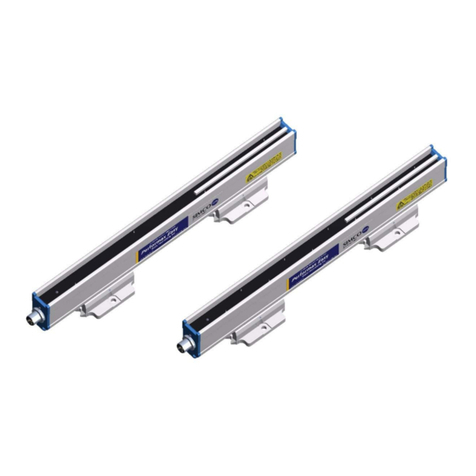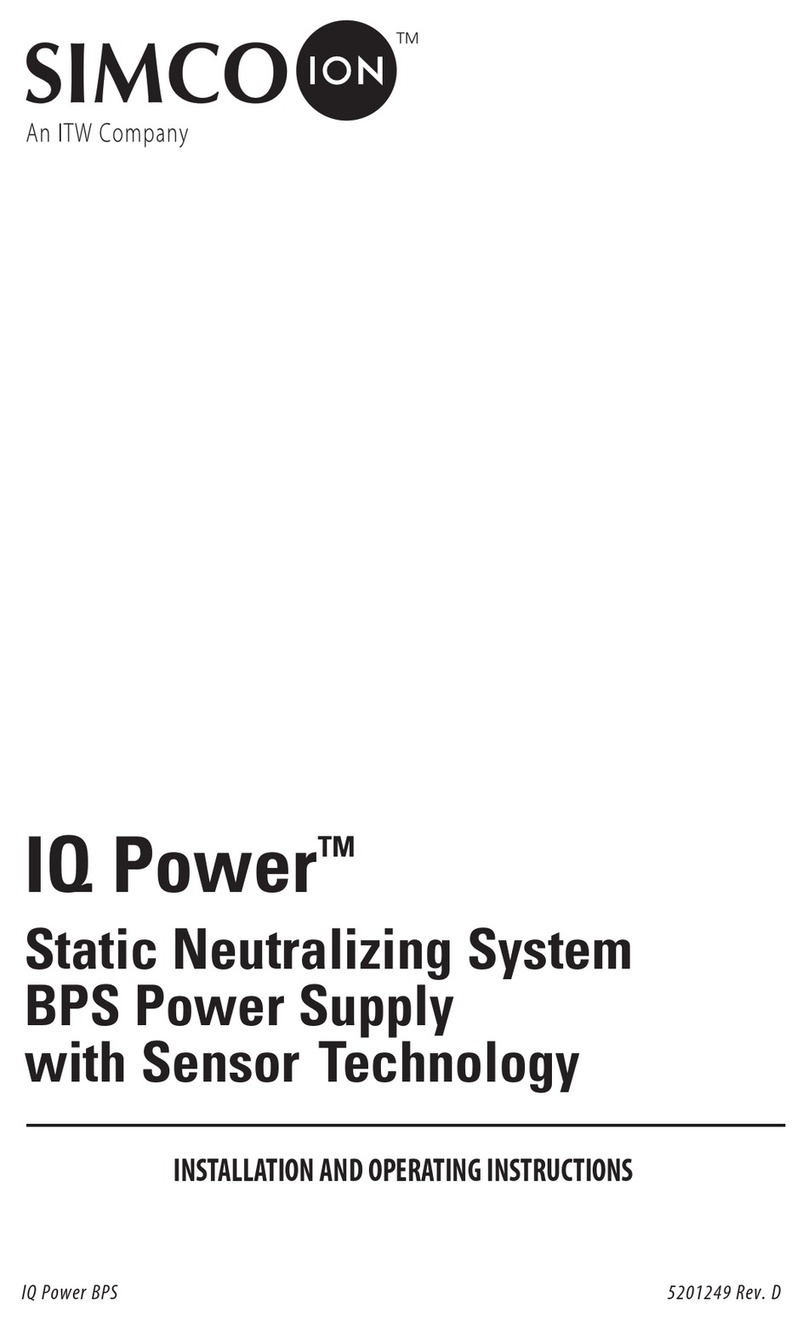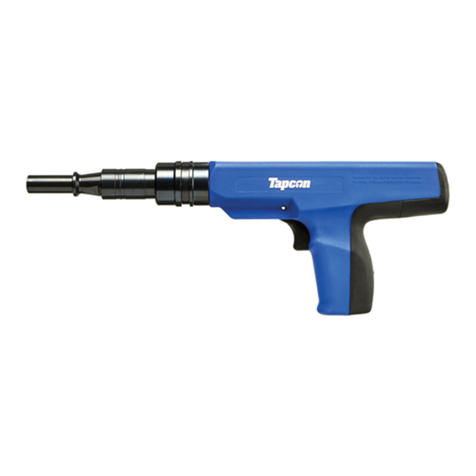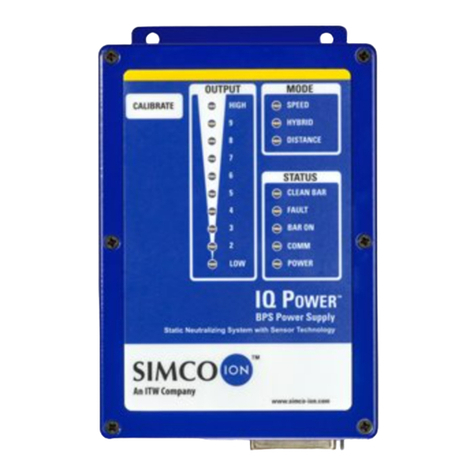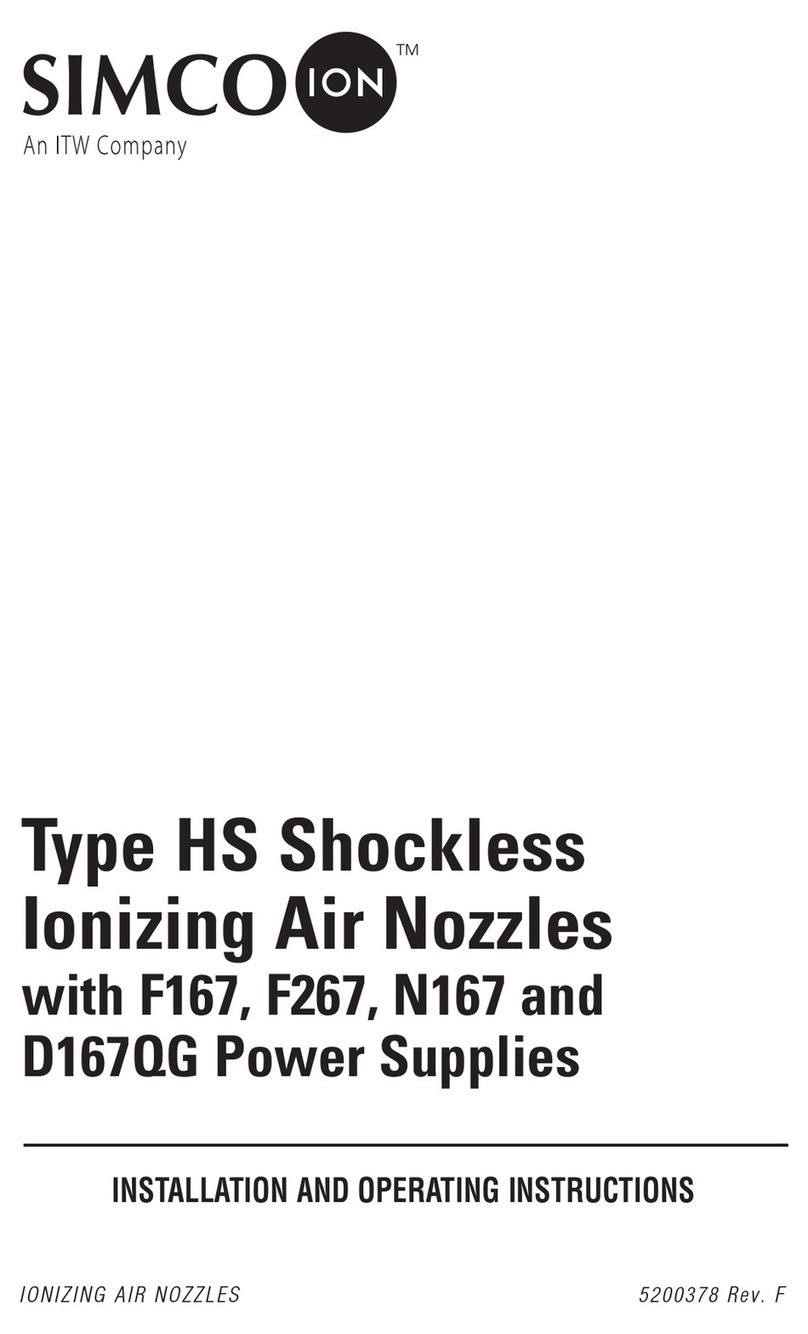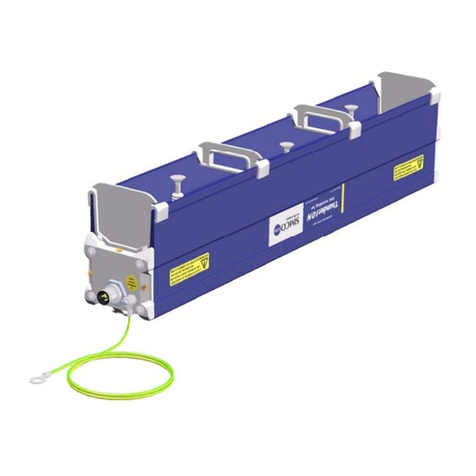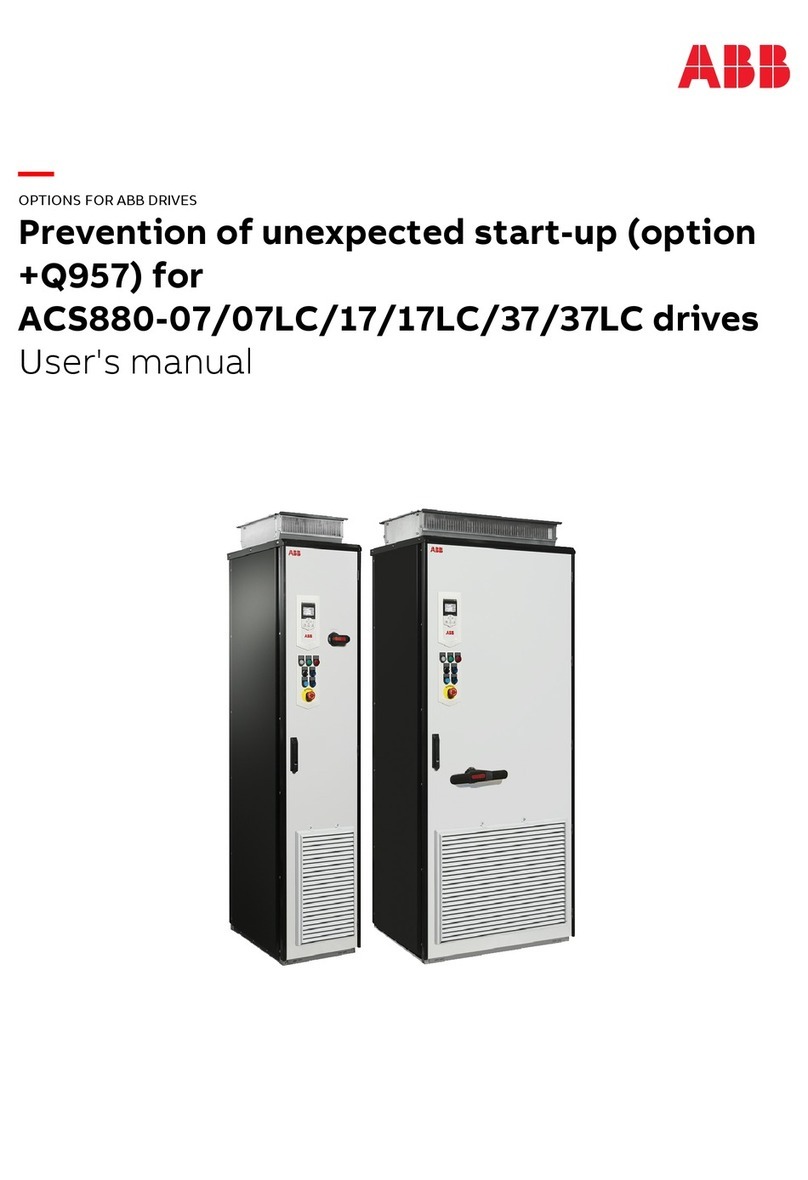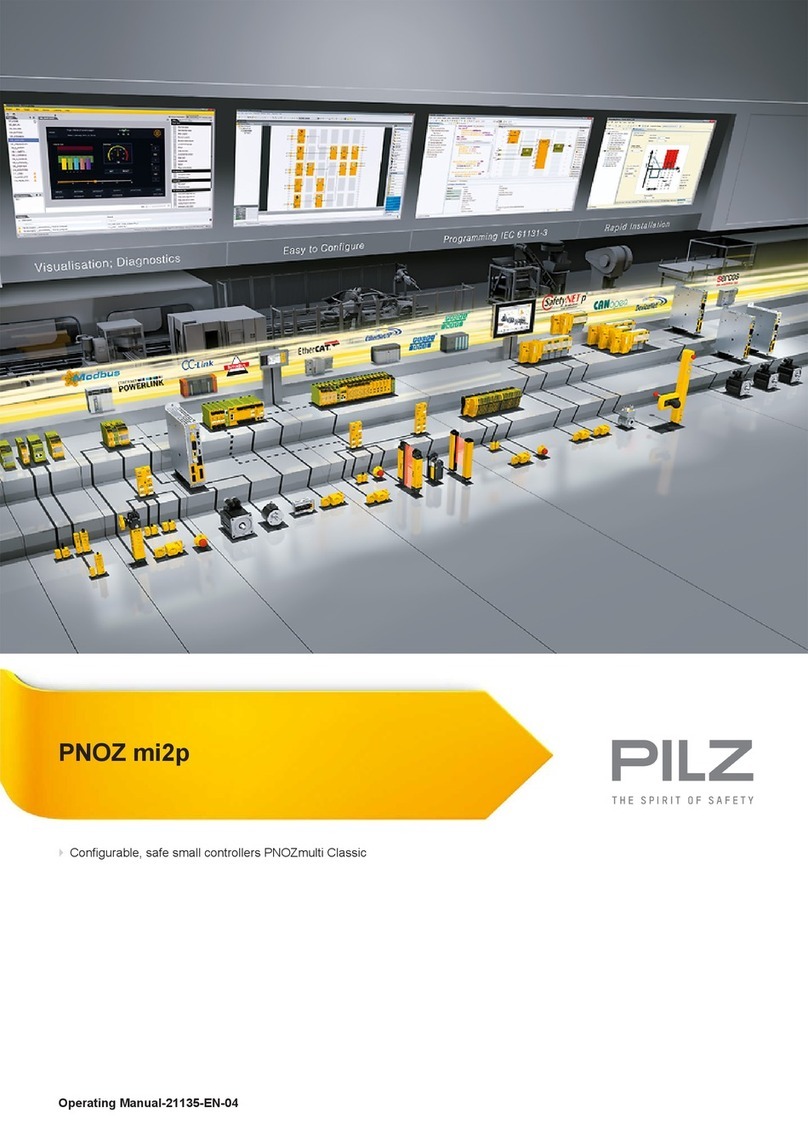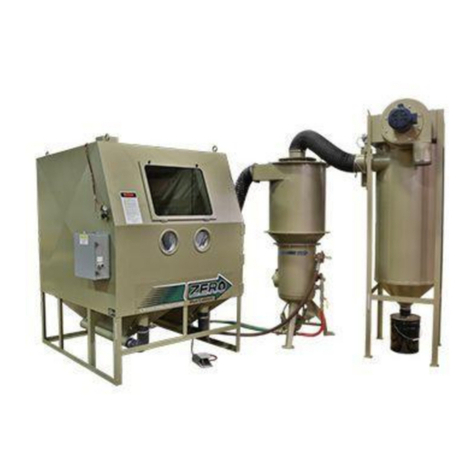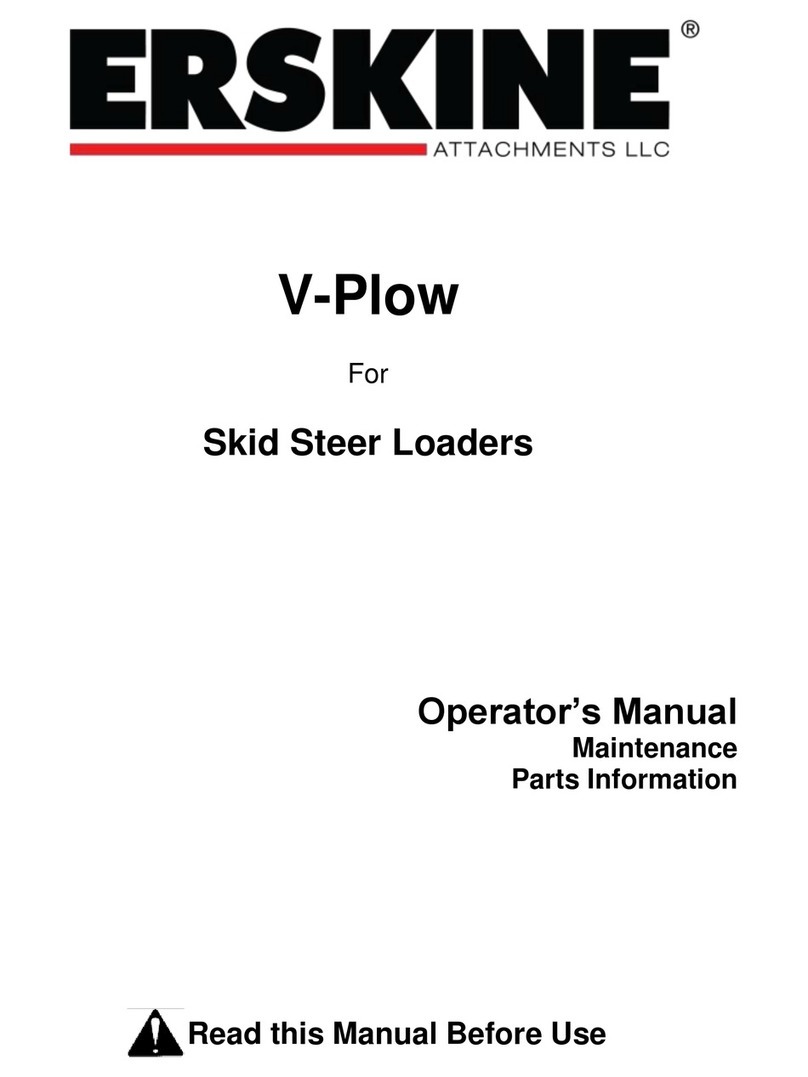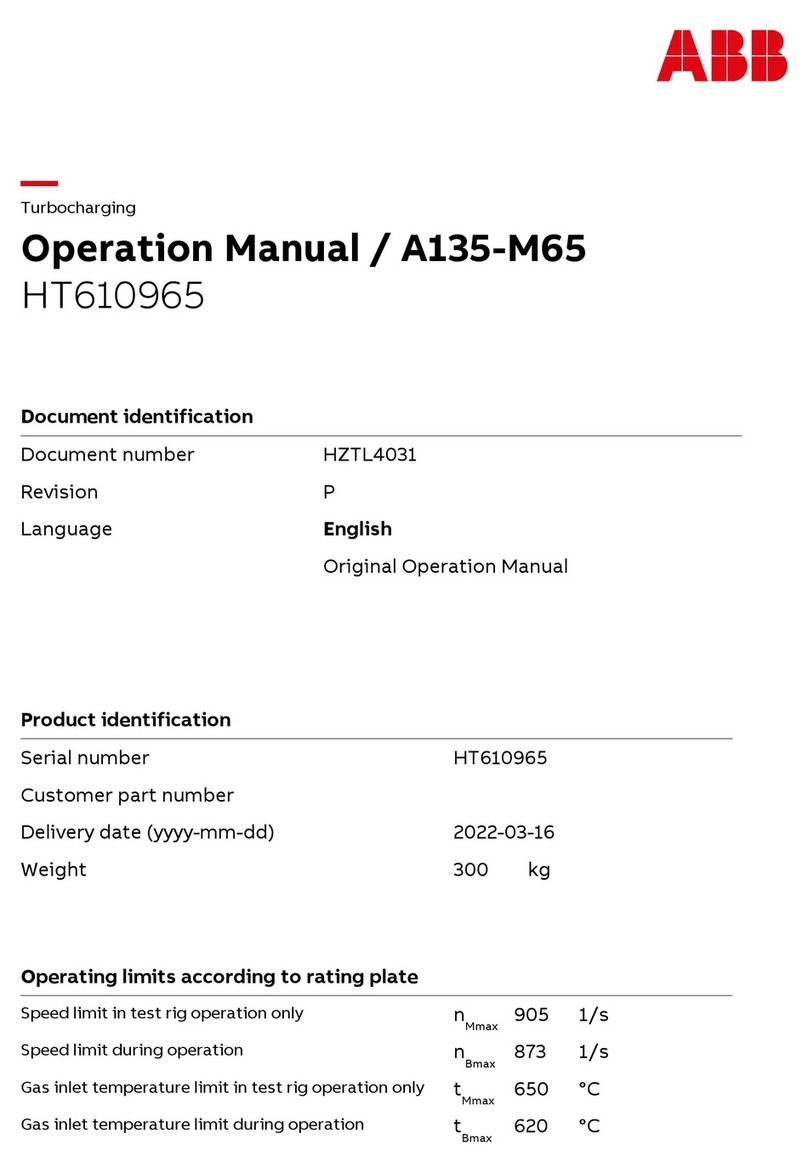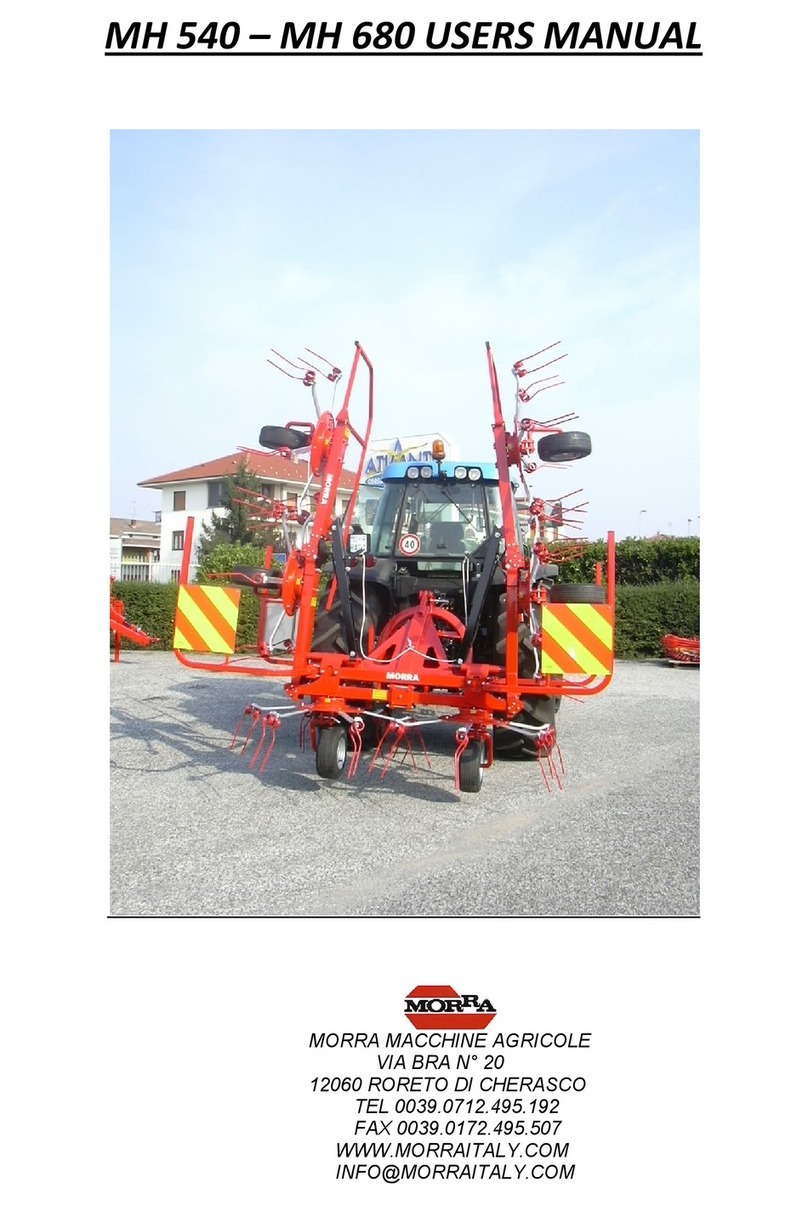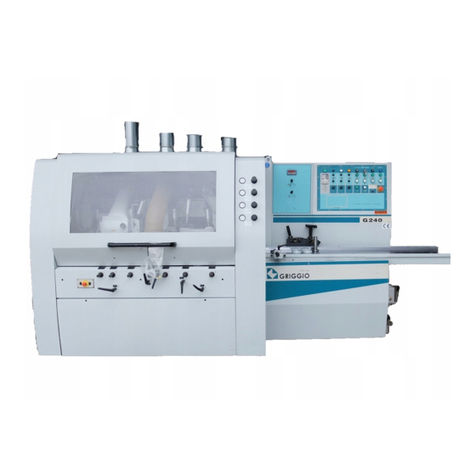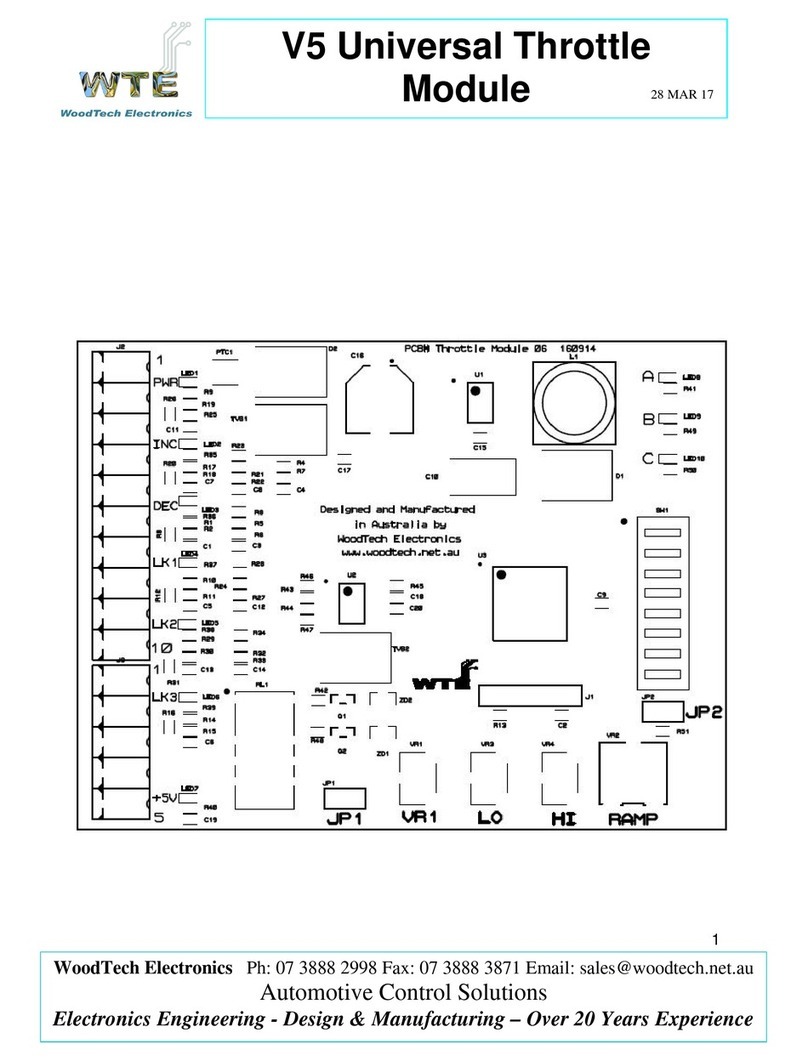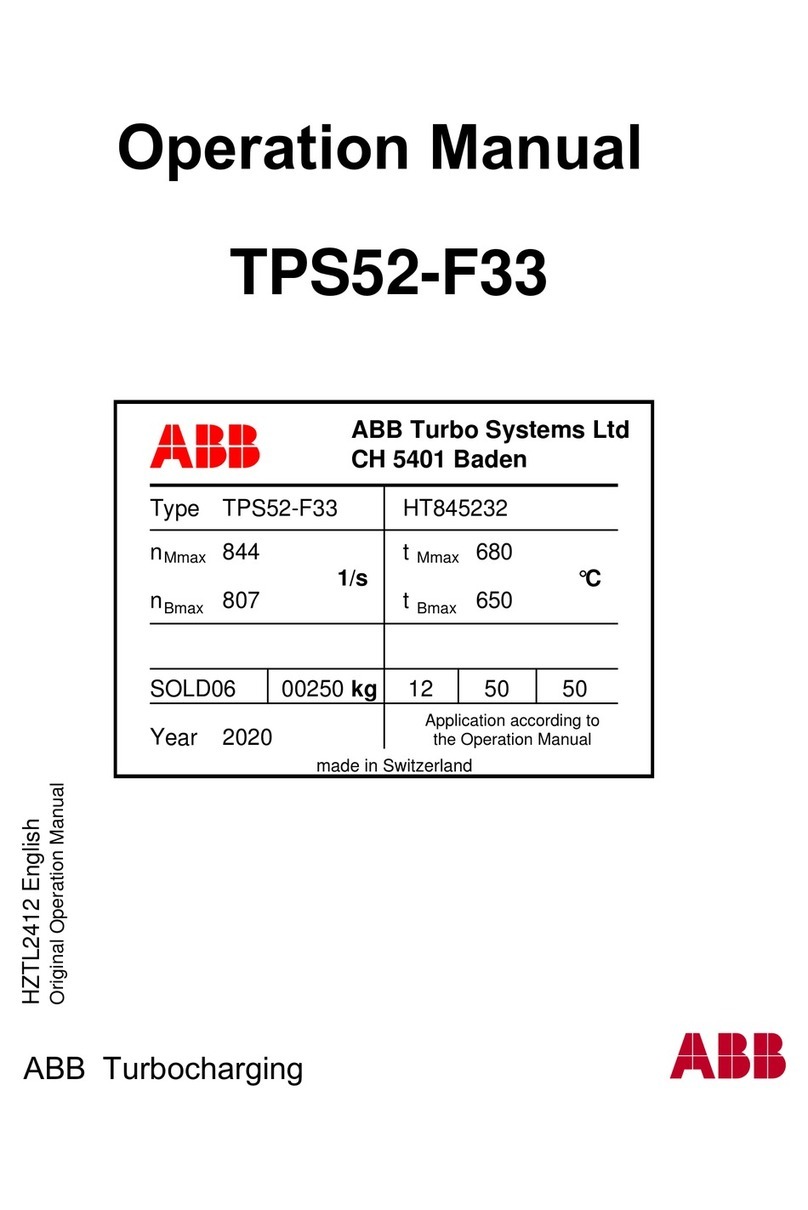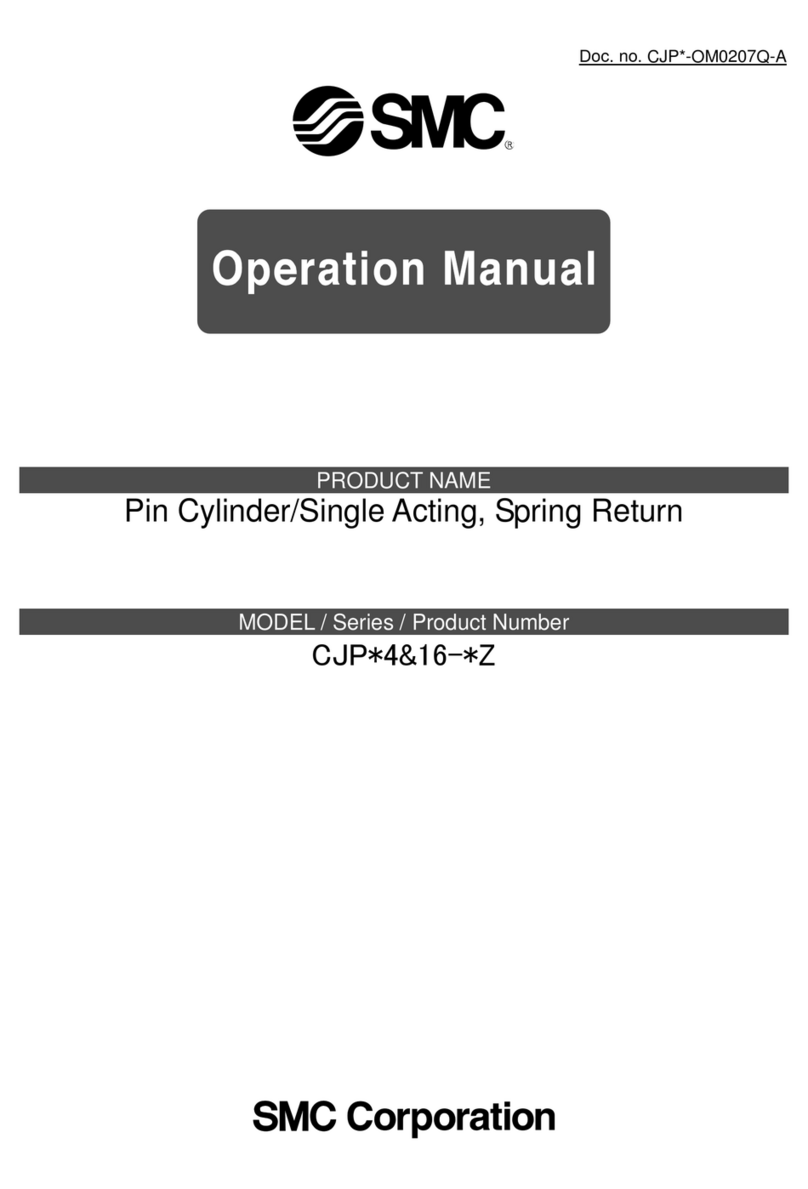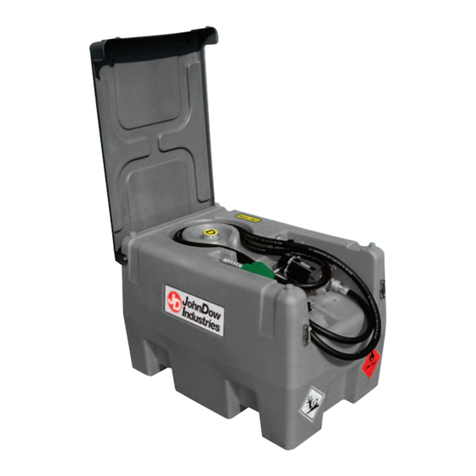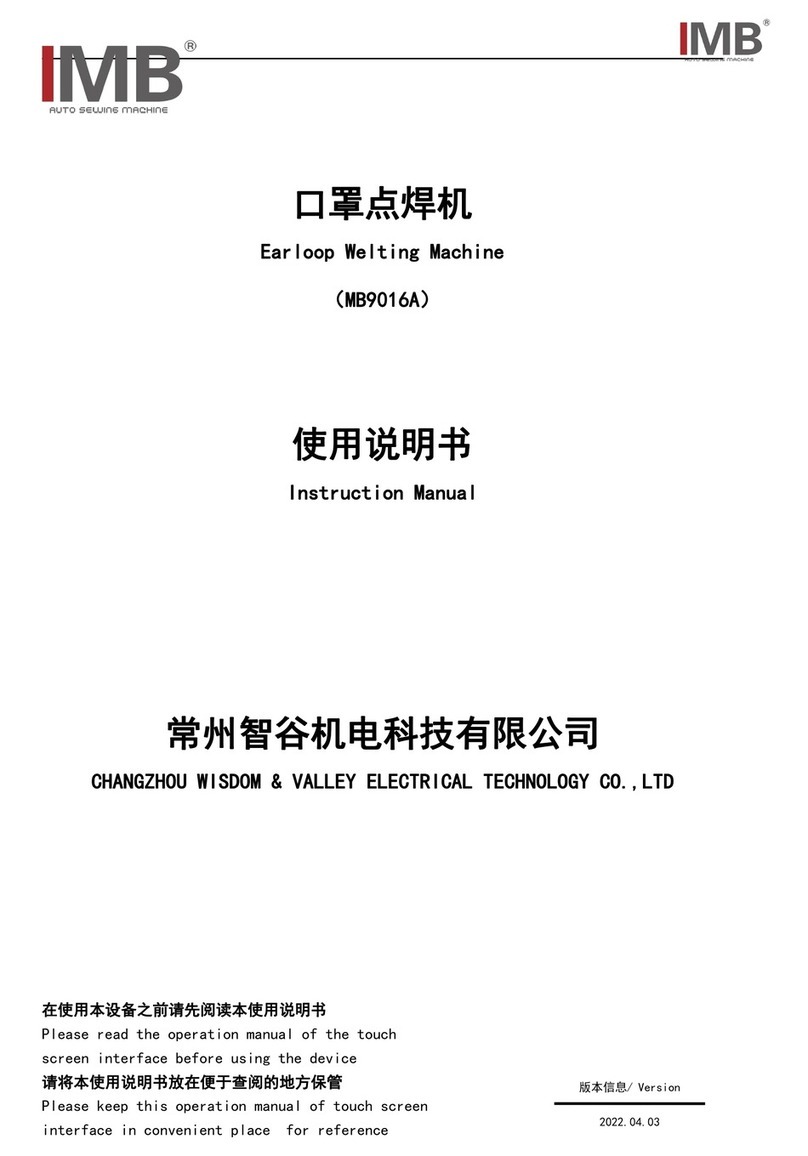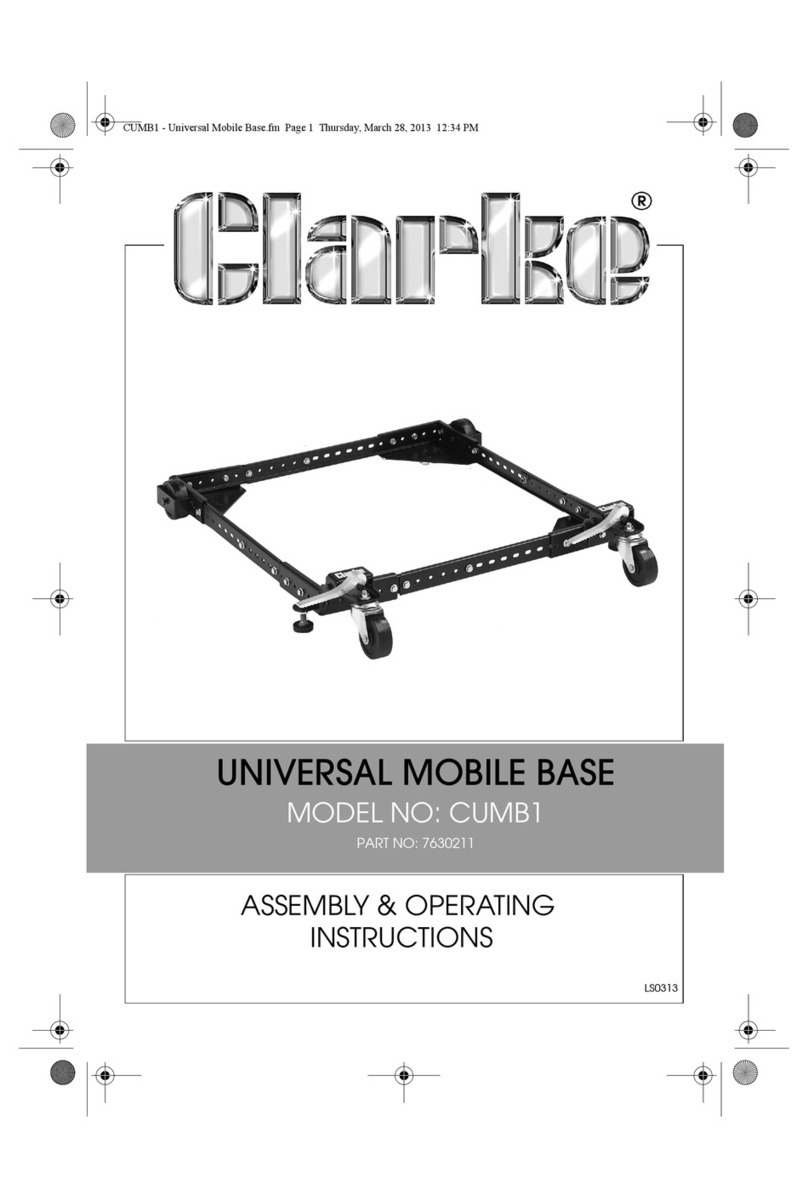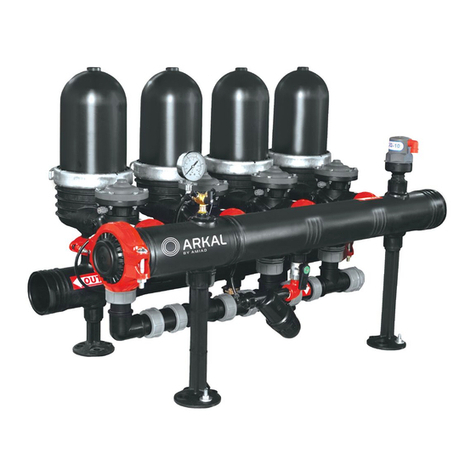
2
IQ Power™ BPS 5201197 Rev. D
2. DESCRIPTION
Simco-Ion’s IQ Power™ Static Neutralizing System consists of a high voltage power
supply, static neutralizing bar, and optional web speed encoder, optional control station
and/or optional computer communication module. The IQ Power™ static bar is available
in three different types; tailored for high speed processes, operating at a distance from the
material or intermediate (hybrid) applications. The IQ Power™ communication module
provides the ability to remotely monitor real time system performance and log operating
data through a computer interface.
The high voltage power supply module provides microprocessor controlled high voltage
DC output to the static bar. The high voltage causes the ionizing pins on the static bar
to generate positive and negative ions. The electric field from the static charge on the
material being processed will attract opposite polarity ions from the static bar causing
the material to be neutralized. The excess ions will either recombine in air or dissipate
to ground.
The static neutralizing bar features current limiting at each individual ion emitting pin to
minimize the risk of hazardous electrical shock if the bar is touched while in operation.
This safety feature does not compromise the IQ Power™ system’s ability to neutralize
static charges. The emitter pins are made of a special alloy to extend the longevity and
sharpness of the points, providing optimal performance of the static bar.
The IQ Power™ static bar is tailored to the application. Speed bars are optimized to
operate on high speed webs at distances of 50 to 230 millimeters [2 to 9 inches]. Hybrid
bars operate at distances of 150 to 460 millimeters [6 to 18 inches] on webs where the
web path is somewhat variable. Distance bars are designed to operate from 300 to 760
millimeters [12 up to 30 inches] to the material. The variety of IQ Power™ static bars
offered allows the user to install the optimum bar for their static neutralizing needs.
The IQ Power™ static bar has a plug-in style high voltage connector for fast and easy
installation. The connector features a pin that “tells” the IQ Power™ power supply what
type IQ Power™ bar is installed and optimizes the power supply output for that type of
bar.
The communication module is designed as a port for an Anybus® CompactCom module.
This module provides interface with a wide variety of standard industrial computer
communication protocols allowing easy integration of the IQ Power™ static neutralizing
system with existing networks.
All IQ Power™ optional modules use 8-conductor modular cable and RJ-45 connectors
for connection to the IQ Power™ system.. They are supplied with 7 foot cable assemblies
but longer lengths are available by calling Simco-Ion customer service (800) 203-3419
(refer to Section 8, Parts and Accessories).
Anybus® CompactCom is a registered trademark of HMS Industrial Networks.
